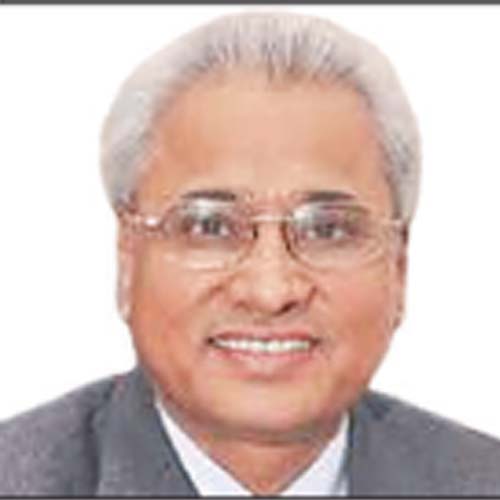Columns
Healing begins at home
A thorough investigation is required to find the actual causes of the deaths of migrant workers in Qatar.
Surya Nath Mishra
Nepal was declared a constitutional monarchy and multiparty parliamentary democracy in November 1990. In the first parliamentary election held in May 1991, the Nepali Congress Party won the majority of seats (i.e., 110 out of 205) required to form the government comfortably. The first democratic government led by Girija Prasad Koirala started sending the Nepali workforce overseas formally in 1993, as the Nepalis had been suffering from unemployment, poverty, and malnutrition for a long time. Only 3,605 Nepali workers migrated abroad to seek jobs in 1993/1994. This government was expected to develop basic infrastructures, industrialise the national economy and create employment opportunities in the country. However, Koirala dissolved the House of Representatives and offered to resign two years before his term after losing the support of 36 lawmakers from his party in July 1994.
As far as Nepali migrant workers’ remittance is concerned, it stands at around Rs3 billion per day. It not only fulfils their dependents’ basic needs and raises their standard of living, but it also contributes over 30 percent to the national GDP. It is the primary source of foreign exchange reserves as well. Undoubtedly, it has decreased the number of people below the poverty line from 42 percent in 1996 to 21 percent in 2022. Since 25 percent of the remittance is used for repaying debt, 15 percent for obtaining domestic goods and services, 50 percent for investing in real estate, and 10 percent for making a capital investment, its contribution to the tax revenue, human resource development, and capital formation cannot be overstated. It increases the incomes of moneylenders, retailers, private schools and hospitals. It raises land prices as well.
Unfortunately, Nepal has entirely failed to make foreign employment safe and systematic. The innocent Nepali workers migrating abroad seeking jobs are deceived and exploited by their money lenders, manpower agents, recruitment agencies, training institutions and employers. The problems they generally face in the destination countries are: Unavailability of promised profession and salaries, non-issuance of workers' identity cards, uneasy access to health care, delayed payment of wages, non-payment of overtime allowance, poor working conditions, poor living conditions, unavailability of gratuities, leave salaries, return tickets and exit permits. Their per capita remittance is the lowest of all the migrant workers in the destination countries. In contrast, their death rate is the highest, as over 95 percent of the migrant workers from Nepal are employed in blue-collar jobs. No wonder we receive, on an average per day, three corpses of Nepali migrant workers at the Tribhuvan International Airport. Usually, two of the three spouses of dead workers are not even entitled to any compensation from their employer institutions or insurance companies for the occurrence of their deaths.
The main causes of such deaths, having been reported superficially for two and a half decades, are sudden cardiac arrest (45 percent), followed by road & traffic Accident (20 percent), workplace accidents (15 percent), suicide (10 percent) and other diseases (10 percent). It is curious how the young migrant workers who have already submitted to the Department of Foreign Employment, Nepal, their wellness certificates to obtain work permits and the Immigration Departments of Destination countries their wellness certificates after getting their health re-examined in their respective destination countries to obtain the resident permits, die of sudden cardiac arrest and other diseases just within the two years of their contract period. A careful and thorough medical investigation is required to determine the actual causes of such deaths and suggest preventive measures.
Since the dependents of migrant workers dying of sudden cardiac arrest, other diseases and suicide are not entitled to compensation from their employer institutions or insurance companies; they are bound to face financial difficulties. It is a matter of grave concern for the sending country's government, the destination countries' governments, and the International Labour Organization's authorities. All of them must form a joint medical investigation team to conduct a careful, thorough investigation into such an enormous number of unexpected deaths without further delay. Also, the destination countries' sponsors should be made mandatory to have their migrant workers' full-time insurance instead of their just working hours insurance, as they are bound not only to work at their working sites but also to live in their accommodations during their off-hours irrespective of their conditions.
Nepal needs to make foreign employment safe, systematic and decent by implementing the Foreign Employment Act effectively. However, excessive dependence on foreign employment needs to be lessened by developing basic infrastructures properly, industrialising the national economy, and utilising available natural and human resources. There are positive correlations among remittance, consumption and import, while there are negative correlations among remittance, agricultural production and industrial production. This is why Nepal's economy has been stagnant despite increasing remittance since 1993. Migrant labour has also led to social problems such as failed marriages, lack of spouse intimacy, and disintegration of families. A considerable number of the youth giving their shoulders to the national economy have been deprived of exercising their voting rights. All this makes it evident that excessive dependence on foreign employment for long will be disastrous for the country economically, politically, socially and culturally.




 19.12°C Kathmandu
19.12°C Kathmandu















